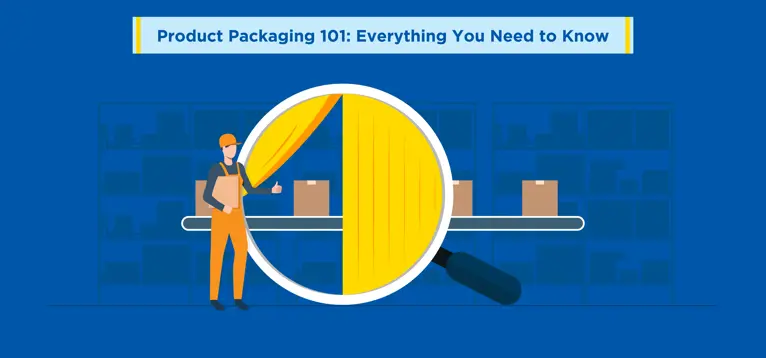Product packaging is one of the most important business decisions that companies of all sizes need to consider as it has a direct impact on several aspects of a company's finances and operations. It affects the cost of production, logistics, supply chain management, marketing and customer experience.
According to the market forecast, the product packaging industry grows by a CAGR of 14.59%. It stood at a market valuation of $27.04 billion in 2020 and is expected to reach $61.55 billion in 2026.
This article will help you understand the crucial aspects of product packaging so that you can design the most effective packaging for your products.
What is Product Packaging?
Product packaging is the process of encasing a product in a containment structure. The containment structure is called a package. The specifications of a package depend on several factors. These include product type, brand identity, handling requirements, marketing objectives, etc.
The product packaging process serves several necessary functions, including containment, protection, convenience, and information transmission. Packaging also serves as the identity of a product and is a crucial component of customer experience. Owing to this, product packaging design also plays a significant role in sales and marketing.
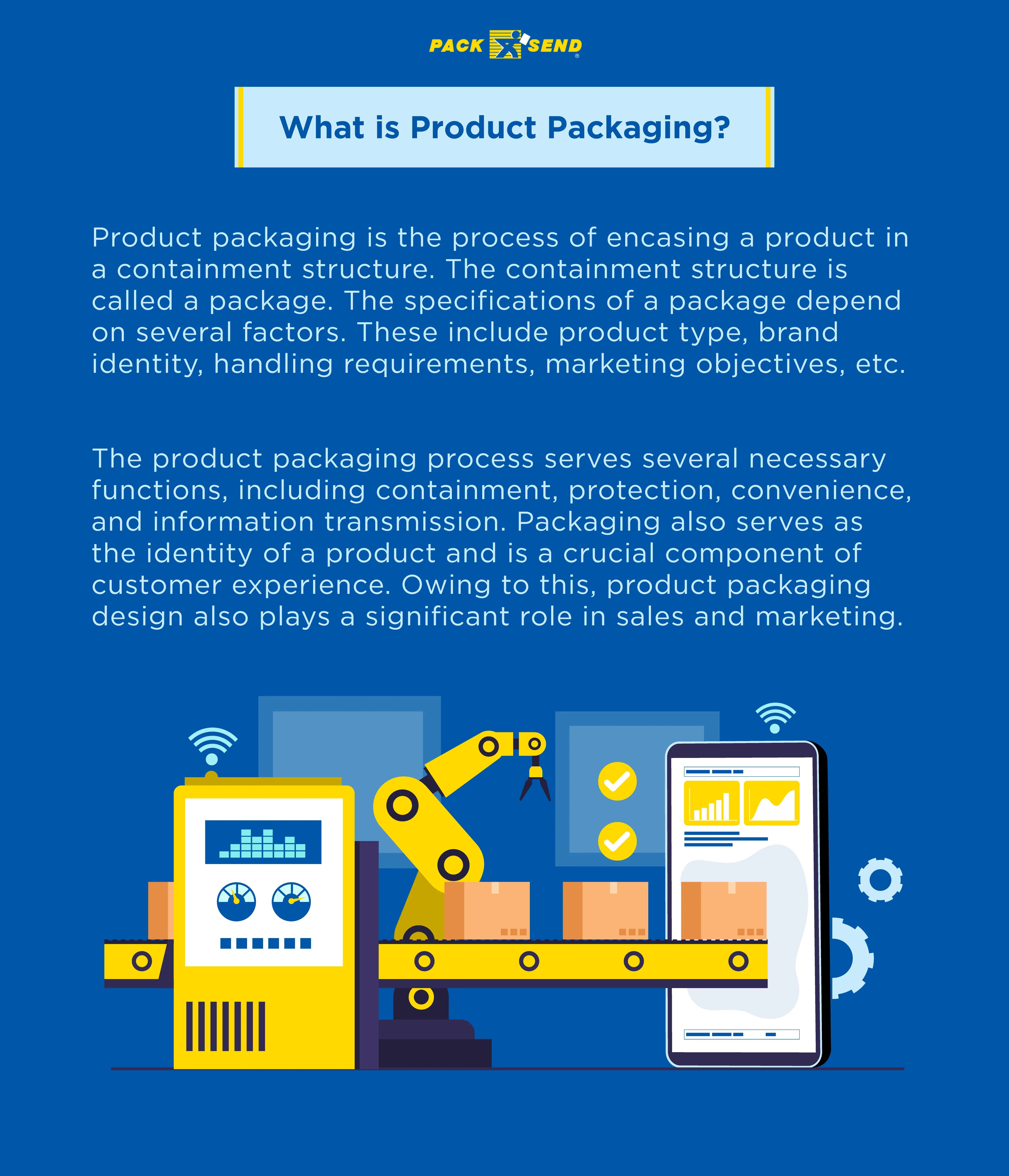
What is the Importance of Product Packaging?
Product packaging plays an important role in several aspects of the business concerning supply chain management, budgeting, and marketing. It also acts as an interface between the customers and the products.
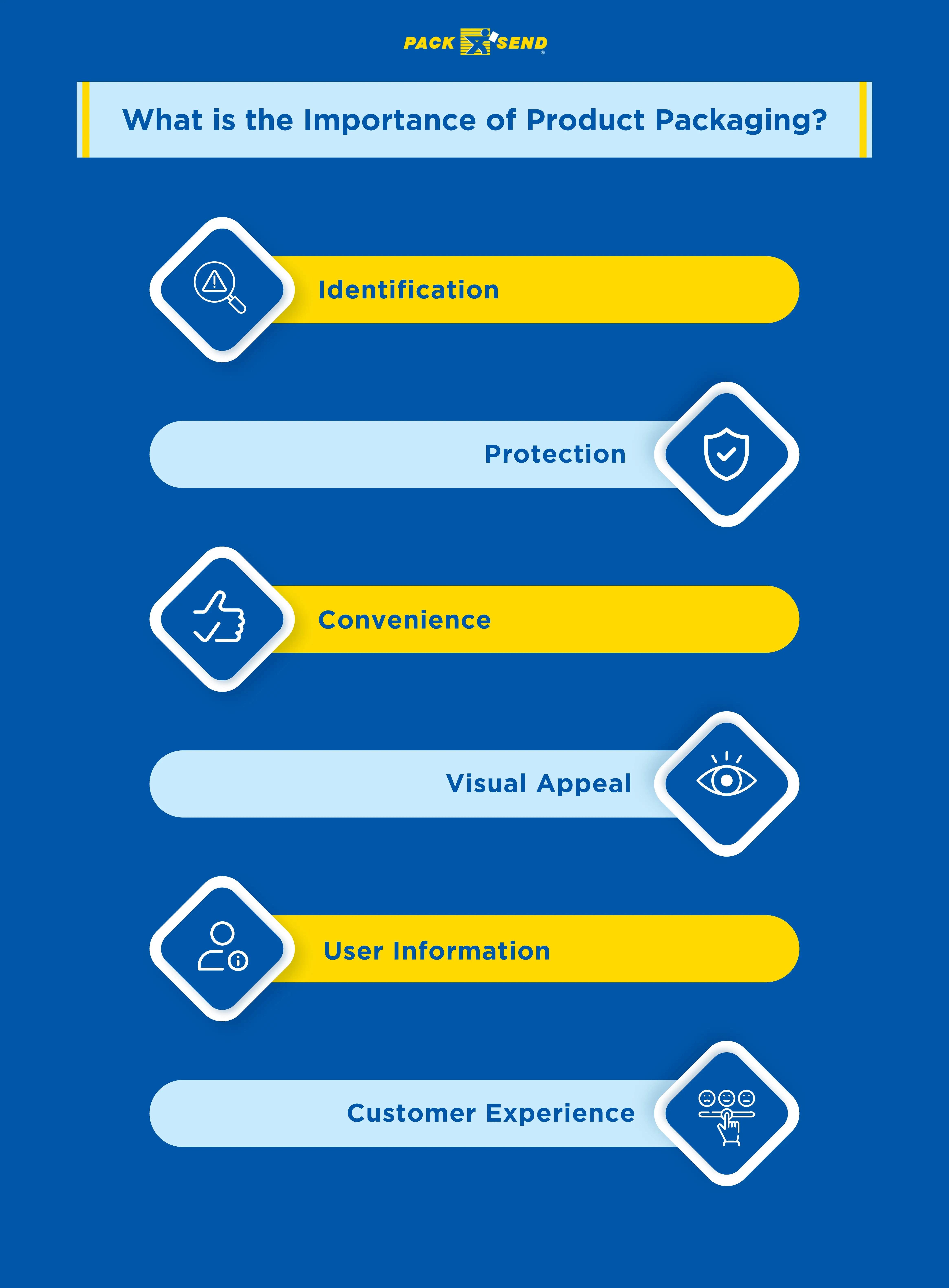
Identification
Before a customer sees the product, they set their eyes on the packaging. It helps customers identify the type of product and also helps differentiate a brand’s product from other options in the market.
Protection
Product packaging helps contain the product in an enclosure and protects it from external factors. This is crucial for handling and management of the product during storage and transportation. Inside a package, the product is safe from environmental exposure, shocks, temperature variations, compression, moisture, and so on.
Convenience
Product packaging makes it convenient for customers to handle and use the product. This is especially true for products that are in liquid, semi-liquid, or vapour form. In such cases, the packaging becomes part of the product. According to a McKinsey report, 61% of consumers stated that Ease of Use is one of the most important factors influencing purchase decisions.
Visual Appeal
As product packaging contributes to the first impression of a product and a brand, it has a significant influence on purchase decisions. About 72% of customers agree that product packaging design influences their shopping. A well-designed product package adds to the attractiveness of a product.
User Information
Companies use packaging to convey important information regarding the products through packaging. Most prominently, product packaging labels carry the name of the product and the brand. It also conveys information about the product, such as its contents, components, materials, date of manufacturing, user guide, country of manufacturing, safety warnings, expiration dates, etc.
This information allows customers to use the product effectively and safely. Furthermore, it also helps them decide whether or not the product fits their requirements.
Customer Experience
Unboxing a product packaging is usually the very first interaction between the user and the product. This interaction initiates the customer experience. The significance of product packaging for customer experience can be gauged by the rising popularity of unboxing posts and videos on social media. On Instagram, #unboxing gives more than 3 million results while the search term “unboxing” yields more than 58 million video results.
Product Packaging Layers
Product packaging consists of three layers: Primary, Secondary and Transport Packaging. Each layer plays an important role in the product’s journey through the supply chain.
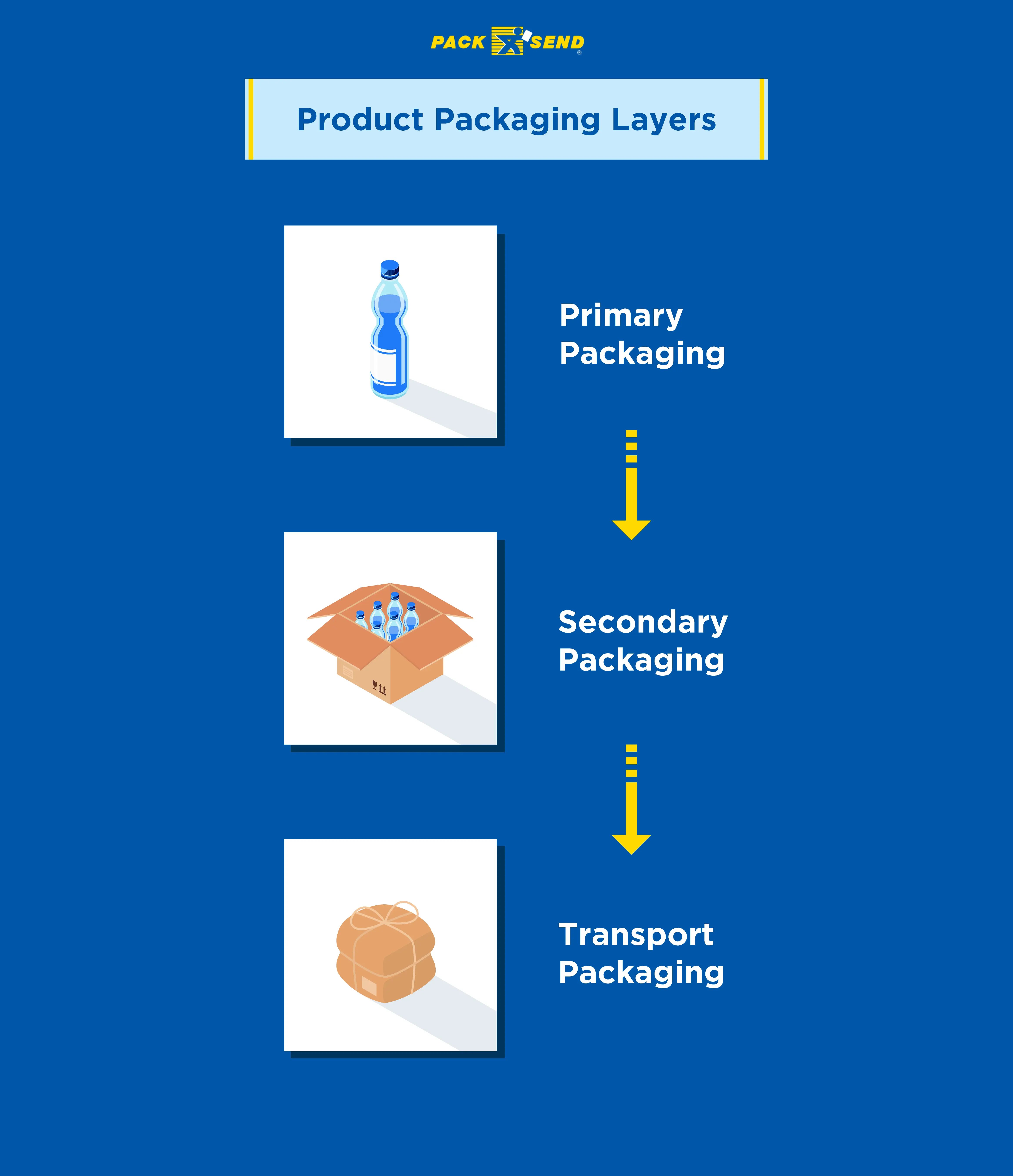
Primary Packaging
This is the layer of product packaging that is in direct contact with the product. It protects the product from adulteration, exposure and damage. The type of primary packaging depends on the product and its uses. Some of the most common types of primary packaging are:
- Boxes
- Pouches
- Containers
- Cans
- Jars
- Tubes
- Bags
- Bottles
This layer also includes product packaging labels that contain important information regarding the product and its uses. This includes:
- Product Type
- Quantity
- Size
- Weight
- Manufacturing Date
- Expiration Date
- Product Composition
- User Guidance
- Safety Warnings
- Barcode
- Serial Number / Batch Number
- Company Information
- Certifications
- Recycling Information
The primary packaging layer is also important for product identification and marketing. It exhibits the name of the product, brand logo, and tagline. Product packaging design also includes elements that convey the nature and values of the product and the brand.
Identity Markers on Primary Packaging:
- Product Name
- Brand Logo
- Tagline or Slogan
- Product / Brand Mascot
- Product / Brand Colors
- Product / Brand Artwork and Design
For many products, primary packaging remains in use alongside the product. This is especially true for food items and liquid products. Tube of toothpaste, perfume bottles, energy drink cans, pickle jars, and washing liquid are all primary product packaging examples of such products.
Secondary Packaging
This layer of product packaging is different for different types of products. Many products might not need this layer of packaging. Secondary packaging is usually done for additional protection and ease of handling. This layer is especially important for packaging art, jewellery, handicraft, and other delicate items.
It is also used to organise multiple products in a unit. Common types of secondary packaging include:
- Cartons
- Boxes
- Wraps
- Tapes
- Bags
Secondary packaging is usually removed before the customer uses the product. The cardboard box that contains the toothpaste tube is an example of secondary packaging. However, secondary packaging can be useful for the storage of some products. For instance, some people keep cardboard cereal boxes to store the pouch of cereals.
Secondary packaging is also used to hold two or more products together to form a unit. For example, integrated rings are used to create a pack of six soda cans. Companies also use secondary packaging to club different products into one unit as part of a package, an offer or a deal. This type of secondary packaging makes it convenient for the customer to carry multiple products.
Transport Packaging
This layer of packaging is intended to identify and protect the product as well as other layers of packaging during storage and transport. It is also known as tertiary packaging or shipping packing. Some of the most common types of transport packaging include:
- Boxes
- Padded Mailers
- Bags
- Envelopes
- Crates
- Containers
Though some products require special transport packaging owing to their size, shape, or frailty. For instance, you need more protective packaging for computers and electronic devices as they are more prone to damage from shocks, moisture, temperature, and other hazards.
If some products need additional protection, they have to be encased in custom packaging with special protection. This can come in the form of cut-out cases, custom foam packaging, cushioned boxes, and so on.
Transport packaging is only intended for protection, handling and identification. Customers do not come across this layer of product packaging in retail stores. However, for eCommerce customers, this is the first layer of packaging that they come across before seeing primary or secondary packaging.
Throughout the order fulfilment journey, a product may be wrapped in multiple layers of transport packaging. For instance, several products fit into a box. Many such boxes are put together in a wooden crate. Multiple such crates are transported in a shipping container.
As the product gets closer to a retail outlet or the customer, it sheds layers of transport packaging.
Factors to Consider When Packaging a Product
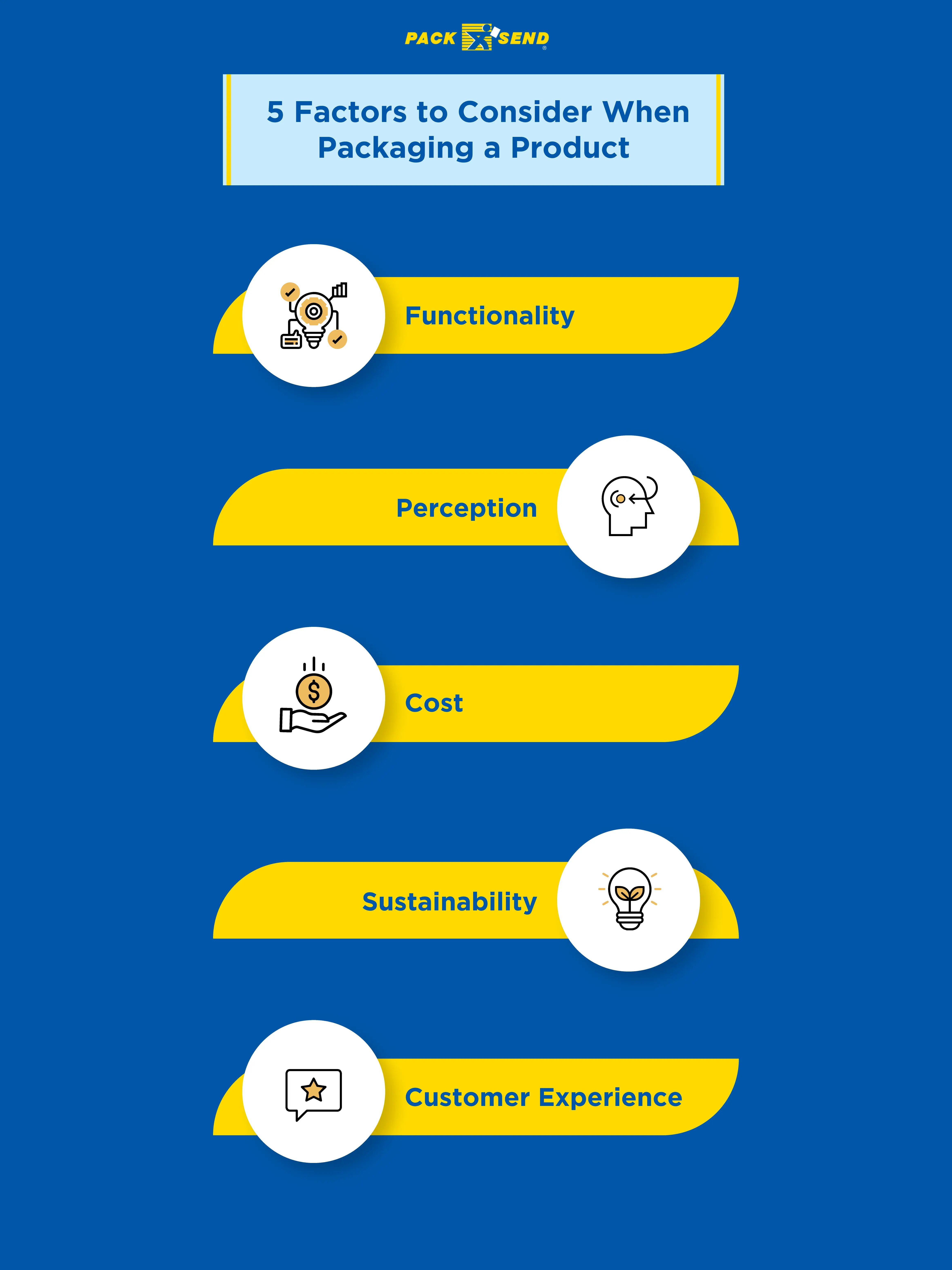
You must consider the following factors when you create packaging for your products. You can also use these factors to evaluate the effectiveness of your current product packaging solutions.
Functionality
Product packaging has to fulfil several functions for the benefit of the customer as well as the seller. The most important functions of product packaging include:
- Reflect the identity of the product
- Containing & protecting the product
- Make it easy to use and handle the product
- Convey information regarding the product
- Attract customers and create a positive user experience
These functions apply to all layers of product packaging. You need to consider all the above factors to ensure that your packaging functions efficiently.
However, the term “product” is different for each layer. For secondary packaging, the term “product” refers to the primary packaging and everything it contains. For transport packaging, it refers to secondary packaging and its contents.
Perception
When designing product packaging, you need to consider how the product will be perceived by the customers. You can convey different types of perceptions based on the packaging materials, design, colours, and messaging.
In crafting the perception towards the product, the product packaging design also serves as a marketing tool. For instance, premium brands use expensive-looking material in their packaging to convey a sense of luxury. Similarly, some brands use bright colours and patterns to convey the playfulness of their brand.
Cost
Three aspects of product packaging impact the price of the product. Firstly, you need to consider the cost of procuring and processing the product packaging material. Secondly, you need to consider the cost of manufacturing the packaging. And thirdly, you need to consider how product packaging will affect the cost of transportation.
Widely used packaging materials such as paper, cardboard, tin, and plastic are easy to procure and cost-effective. They are also easy to mould into desired product packaging design. These materials are ideal for small business packaging. But, they are also quite common so it is difficult to create a distinct identity with these materials.
To compensate for this drawback, you can improve the design and architecture of product packaging. Consequently, this would increase the cost and complexity of the manufacturing process. You need to find a balance between material and manufacturing to develop product packaging design that is functional, cost-effective and attractive for your customers.
Alongside this, you must also consider the dimensions and weight of the packaging. These factors are crucial when it comes to logistics. Large and heavy product packaging will significantly increase the cost of storage and transportation.
Sustainability
Alongside being functional, the product packaging should also be easy to dispose of or recycle. Sustainability also has a significant influence on purchasing decisions. Environmentally friendly product packaging can be a good selling point for your products.
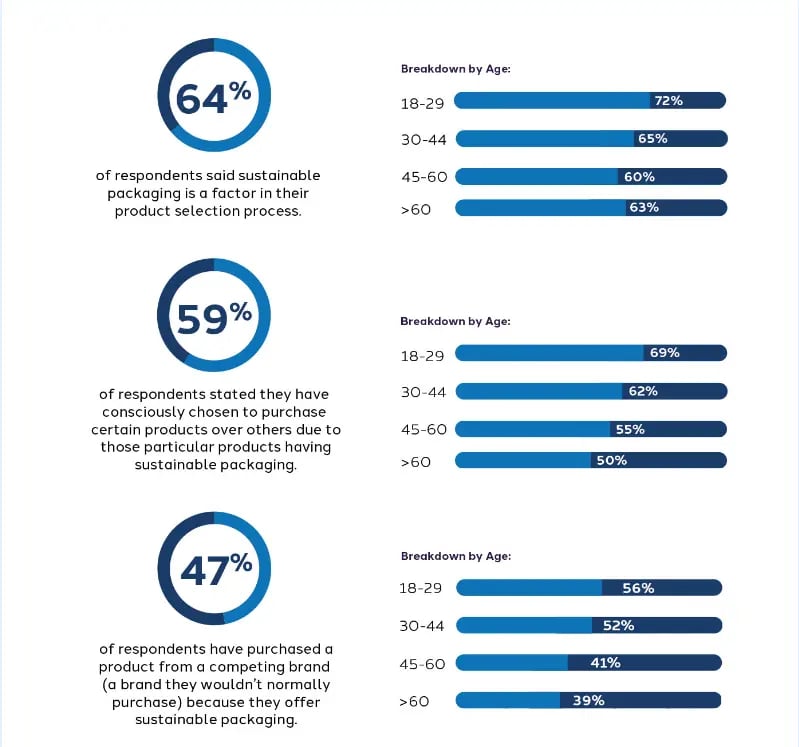
This factor works differently for different layers of packaging. Primary packaging is usually discarded after the product is consumed. However, some packaging outlives the products they contain. Glass jars, cans, bottles, and wooden boxes are product packaging examples that are used by many customers for a variety of purposes.
The life of primary packaging should be at least as long as the products’ life. At the same time, they should be easy to dispose of or recycle to reduce their environmental impact.
Secondary packaging is usually disposed of before the customer starts using the product. These layers only have one-time use and become irrelevant once they have served their purpose. The secondary packaging has the shortest life and hence you should focus most on its disposability and environmental impact.
Transport packaging ceases to serve its purpose once the product is delivered to the customer or the retail outlet. Though some of the transport packaging can be reused. For instance, wooden crates and shipping containers can be put to use for transporting other batches of products once they are emptied.
You need to consider the sustainability of the product packaging based on the purpose it serves as well as its environmental impact.
Customer Experience
Most importantly, you need to consider the customer experience that results from product packaging. Two aspects of product packaging contribute to customer experience: Unboxing and Utility.
Unboxing refers to the act of removing the product from the package. It is the reverse of the product packaging process. When it comes to unboxing, the product packaging should be easy to open. You can also develop product packaging in such a way that it opens uniquely. But do not make it too complicated for the customer. You should also ensure that the packaging does not damage itself or the product while unboxing.
Another crucial aspect of the unboxing experience is the number of layers the customer goes through before reaching the product. This number varies depending on the product. Luxury items' product packaging usually has 2 to 3 layers for unboxing. On the other hand, FMCG products are accessible after removing only one layer.
Utility refers to how a customer can use the packaging alongside the product. For instance, energy drink cans are useful for customers to consume the beverage. You should design product packaging in such a way that it assists the customer in using the product.
4 Aspects of Creating Product Packaging
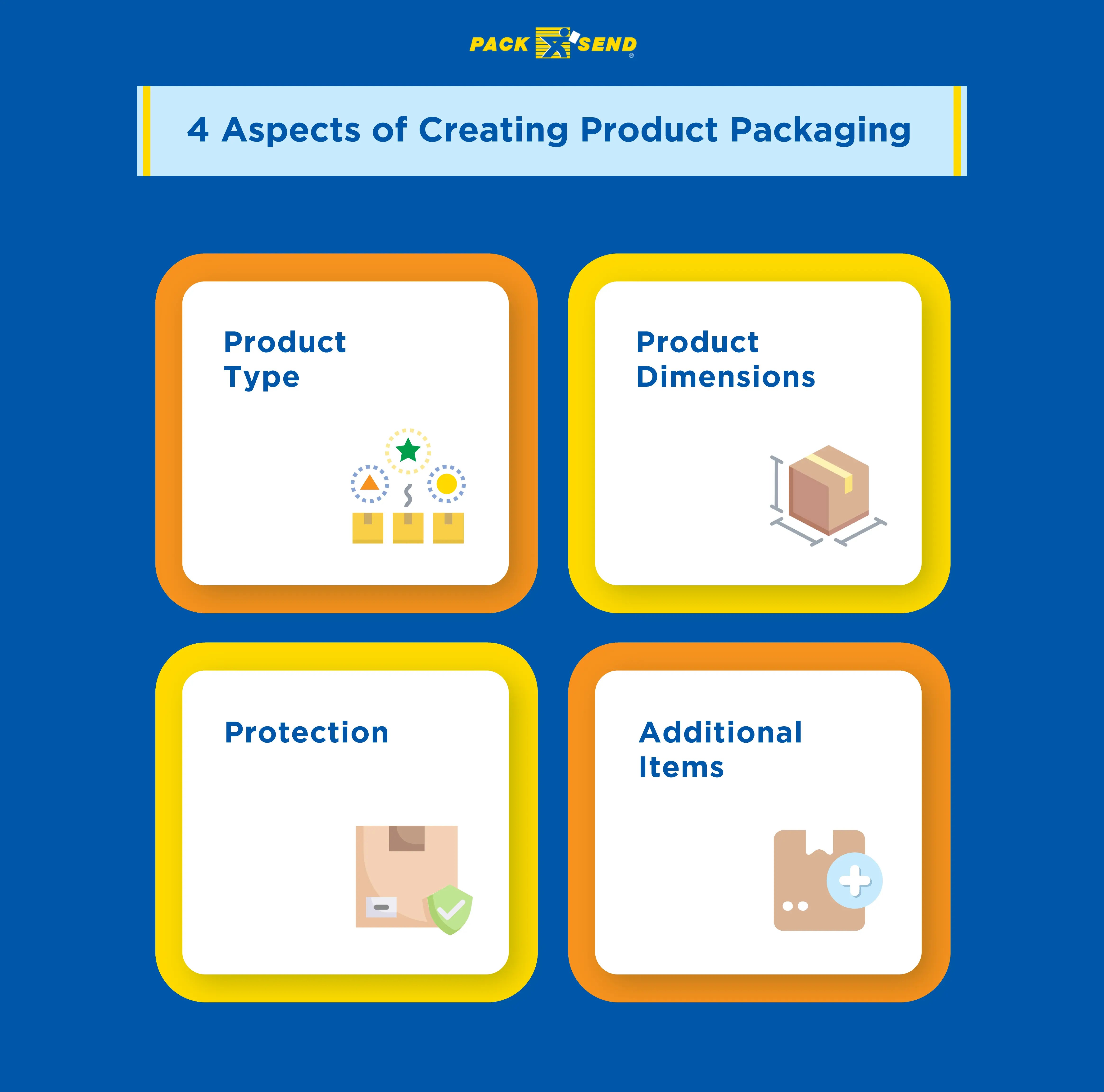
The four aspects of product packaging have a direct impact on several aspects such as production cost, transport, storage, and marketing. Many of these aspects are intertwined and influence one another in several different ways.
Contents
The primary function of product packaging is to contain the product. You can list the requirements for product packaging by answering the following questions:
- What is the product?
- What are the dimensions of the product?
- What kind of protection is necessary for this product?
- What are the necessary packaging items aside from the product?
Product Type
Product type influences all aspects of the primary packaging. These include the product packaging process, architecture, material, and design. When you design primary packaging, you need to ensure that it appropriately contains the product and that the customer can easily extract the product from the packaging.
Owing to these, certain types of products only have a specific type of packaging. For instance, liquid products are best contained in bottles, cans and jars. While vapour-based products like deodorants and termite sprays use canisters as primary packaging. On the other hand, solid products offer more room for creative product packaging solutions.
If the product is properly contained with primary packaging you can take more liberty with secondary packaging.
Product Dimensions
Product dimensions help you determine the size and shape of your packaging. They also determine the materials used for product packaging.
For liquid, semi-liquid, and vapour-based products, you need to consider the volume, pressure and viscosity. For solid products, you need to consider geometric measurements (length, width, & height), weight and quantity.
Volume and geometric measurements help you determine the size and shape of the packaging. While weight, quantity, pressure, and viscosity are crucial to determine packaging material, architecture and extraction method.
The dimensions have a snowball effect on each layer of product packaging. This in turn impacts the cost of storage and transportation. So you need to balance the dimensions of product packaging with the functionality of each layer.
Protection
Products require different types of protection at different stages of supply chain management. You need to map out the journey of the product to identify potential threats and design different layers of product packaging solutions accordingly.
The degree of protection at each stage decides the material and architecture of the packaging. This also influences the weight and size of the package. At each stage, the weight and size of the package increase owing to additional layers of protection. In turn, this has a direct impact on the cost of transportation and storage throughout the supply chain.
You have to consider all these factors for each layer of packaging. With primary packaging, you protect the product against general hazards that can affect the product upon contact. These include physical damage, moisture, temperature, environmental exposure, and so on.
Secondary packaging can reinforce primary packaging with additional protection. You can use cut-out encasing, wraps, insulating material, protective foam, bubble wraps, packing peanuts, sponges, etc. for this purpose.
Transport packaging can protect its content during transport as well as storage. Depending on the stage of order fulfilment, a product can be encapsulated in several layers of transport packaging.
For instance, during ocean freight transport multiple products are stored in a box, several boxes are stored in a crate and several crates are stored in a shipping container.
Additional Items
This aspect only applies to primary and secondary packaging. Based on the type of product, you need to include several items in the packaging. These include product packaging labels, user guides, safety warnings, product accessories, attachments, complementary items, etc.
Among these items like labels, user guides, safety warnings, and warranty cards are essential parts of product packaging. They are necessary because they convey important information regarding the product and ways to use it. For most products, these items form a part of the primary packaging.
You can also include complementary items, attachments, and relevant accessories for the product in the packaging. Such items are usually part of secondary packaging. They aid the use of the product or are included in the packaging for marketing purposes.
The inclusion of additional items has a direct impact on the size, weight, and architecture of product packaging.
Architecture
Product packaging architecture involves designing the shape and structure of different layers of packaging. It also refers to the arrangement of different items within the product packaging. You need to consider the following aspects to design the architecture of primary packaging:
- Product Dimensions
- Layers of Protection
- Packaging Material
For secondary packaging, you also need to consider the above aspects of primary packaging as well as the quantity and dimensions of additional items.
Product packaging architecture should ensure that each layer of packaging fulfils its respective purpose. You also have to ensure that each layer of product packaging design is compatible with other layers.
You can also influence customer experience with product packaging architecture. You can create each layer to tell a story that gradually builds up anticipation and culminates with the revelation of your product.
But, this kind of marketing gimmick only works for a few types of products such as luxury fashion, jewellery, gadgets, gourmet food products, and so on.
For most products, customers just want to do away with the packaging and reach the product as fast as possible. FMCG products are a good example of this. You can improve the attractiveness of such products by making packaging minimal, useful, and visually appealing.
Material
When you select packaging material, you need to strike a balance between cost, utility, weight, protection, sustainability, and appeal. Some of the most common materials used for product packaging include:
- Glass
- Paper
- Cardboard
- Aluminium
- Tin
- Textile
- Wood
- Plastic
Different packaging materials have their advantages and disadvantages. For primary packaging, you should pick the material that is necessary to contain and protect the product. For secondary packaging, you should select a material that complements the primary packaging as well as compensates for its drawbacks.
For instance, if your primary packaging is too heavy, you should go for light material for secondary packaging. Similarly, if the primary packaging is brittle, you need to compensate by using cushioning material and a robust exterior in secondary packaging.
Design
Product packaging design refers to visual elements such as colours, patterns, text, logos, and so on. For this aspect of the product packaging process, you have to focus only on the communication of information and identity.
The first aspect of product packaging design you need to consider is information architecture. It refers to the sequence in which the customer receives pieces of information. You can map out this sequence based on layers of product packaging or the unboxing process.
Then you have to distribute information about the product and the brand in deference to significance and utility. Once you have defined the information architecture, you can beautify it with visual elements.
These elements include colours, patterns, graphics, images, font styles, and so on. Each of the visual elements plays a unique role in defining the overall perception of the product. For instance, bright colours communicate vibrance and playfulness. While pastel colours are associated with comfort and joy.
You have to select visual elements for packaging based on the type of product and the perception you want to create about the product. You can analyse product packaging examples from your industry to see how other brands package similar products. Then you can work on product packaging ideas that can differentiate your product in the market.
5 Best Practices of Product Packaging
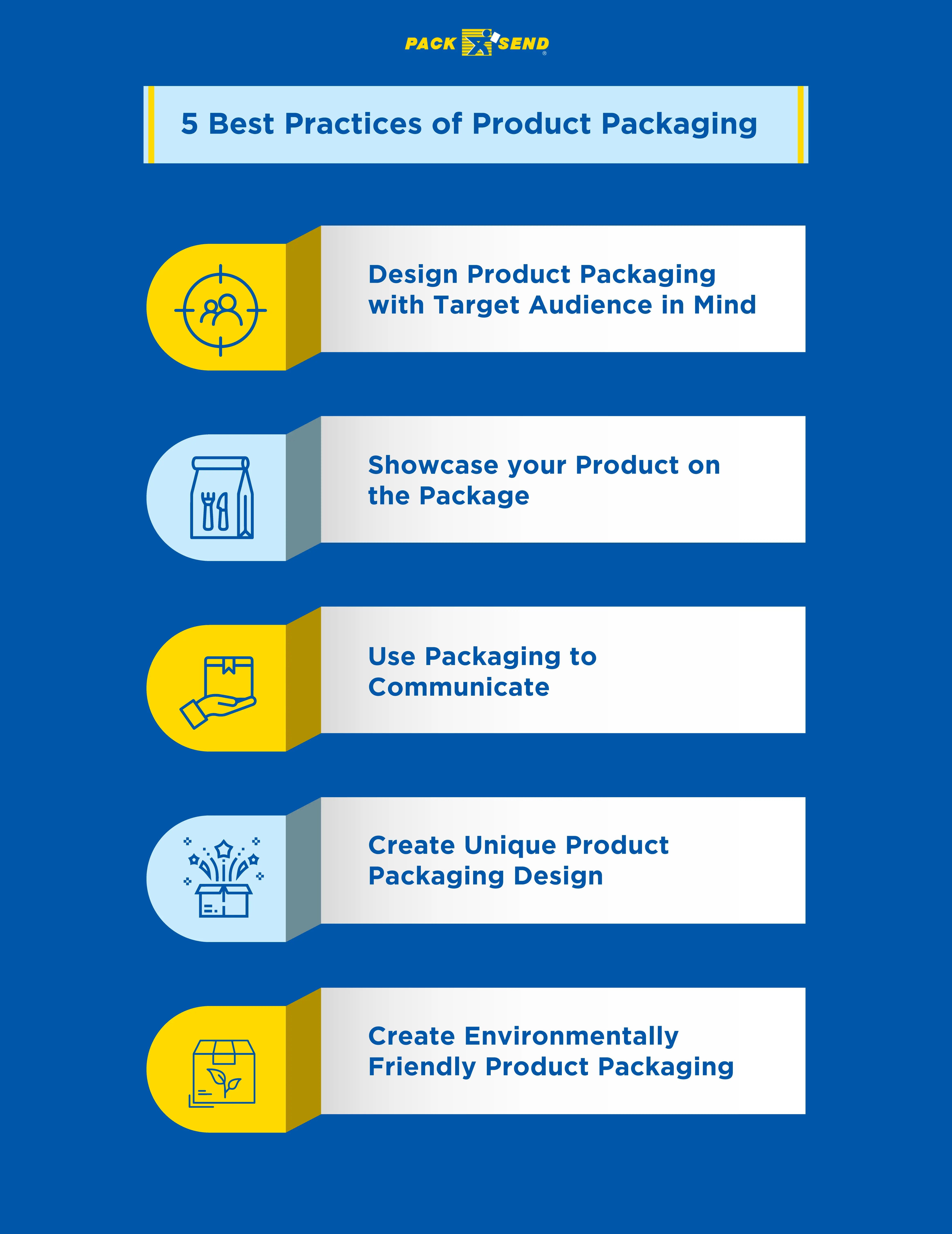
Here are some of the proven industry best practices that you should keep in mind for the product packaging process and design.
Design Product Packaging with Target Audience in Mind
You must keep the end user in mind for every stage of the product packaging process. If your product packaging design can resonate with your customers, it can help you create a positive customer experience as well as increase sales.
You need to think about what would attract the customers towards the product. For instance, products targeted towards children are colourful packaging with funky fonts. On the other hand, luxury products use premium packaging and minimal design with elegant fonts.
Showcase your Product on the Package
People can easily identify the product if you show it on the package. Some brands use transparent packaging for this purpose while some present the product in a graphical form. 74% of consumers say that transparent and honest packaging builds trust in the brand.
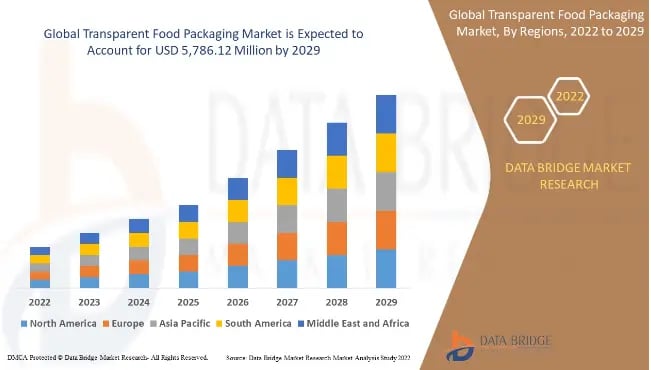
This factor becomes more significant if you are selling food products. The global transparent food packaging market continues to grow and is expected to cross a $5 billion valuation by 2029. This trend shows the ever-rising popularity of transparent packaging for food products.
Use Packaging to Communicate
Product packaging design provides ample opportunities for you to communicate with your customers. Through packaging, you can tell people what type of product you are selling, its components, who made the product, and so on. For instance, you will often see images of strawberries on strawberry-flavoured ice creams and juice boxes.
On the other hand, you can also communicate the user experience of the product through packaging. Energy drinks cans are good product packaging examples of this phenomenon. These products communicate aggression and vibrance with bold fonts, graphics, and colours.
Create Unique Product Packaging Design
Product packaging can be an incredible marketing tool. It helps you attract customers, influence purchase decisions, and promote your product. According to the 2022 Dotcom Survey, 44% of consumers say that premium packaging can make the brand feel more upscale. Furthermore, 42% of customers are more likely to shop with a brand that has attractive packaging.
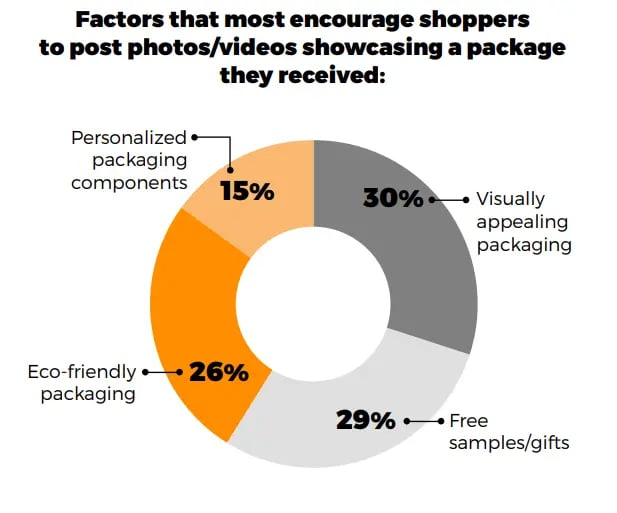
Packaging can also create enticing customer experiences. 47% of people feel that attractive packaging makes them excited to open the package. If you focus on creating such experiences through your product packaging design you can achieve several marketing objectives.
Create Environmentally Friendly Product Packaging
Consumers are increasingly conscious of the environmental impact of the products they use. This is indicated by the influence of sustainability factors on their purchase decisions.
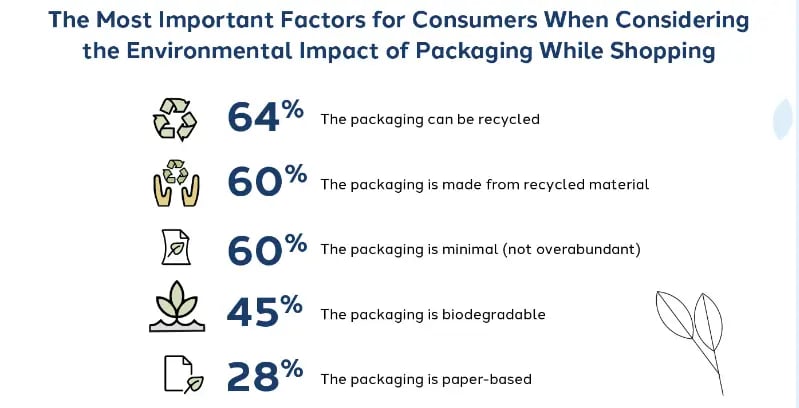
Hence, sustainable materials, ethical practices, and product packaging recycling have a significant influence on purchasing decisions. 69% of consumers are more likely to shop with a brand with eco-friendly packaging.
4 Excellent Product Packaging Examples
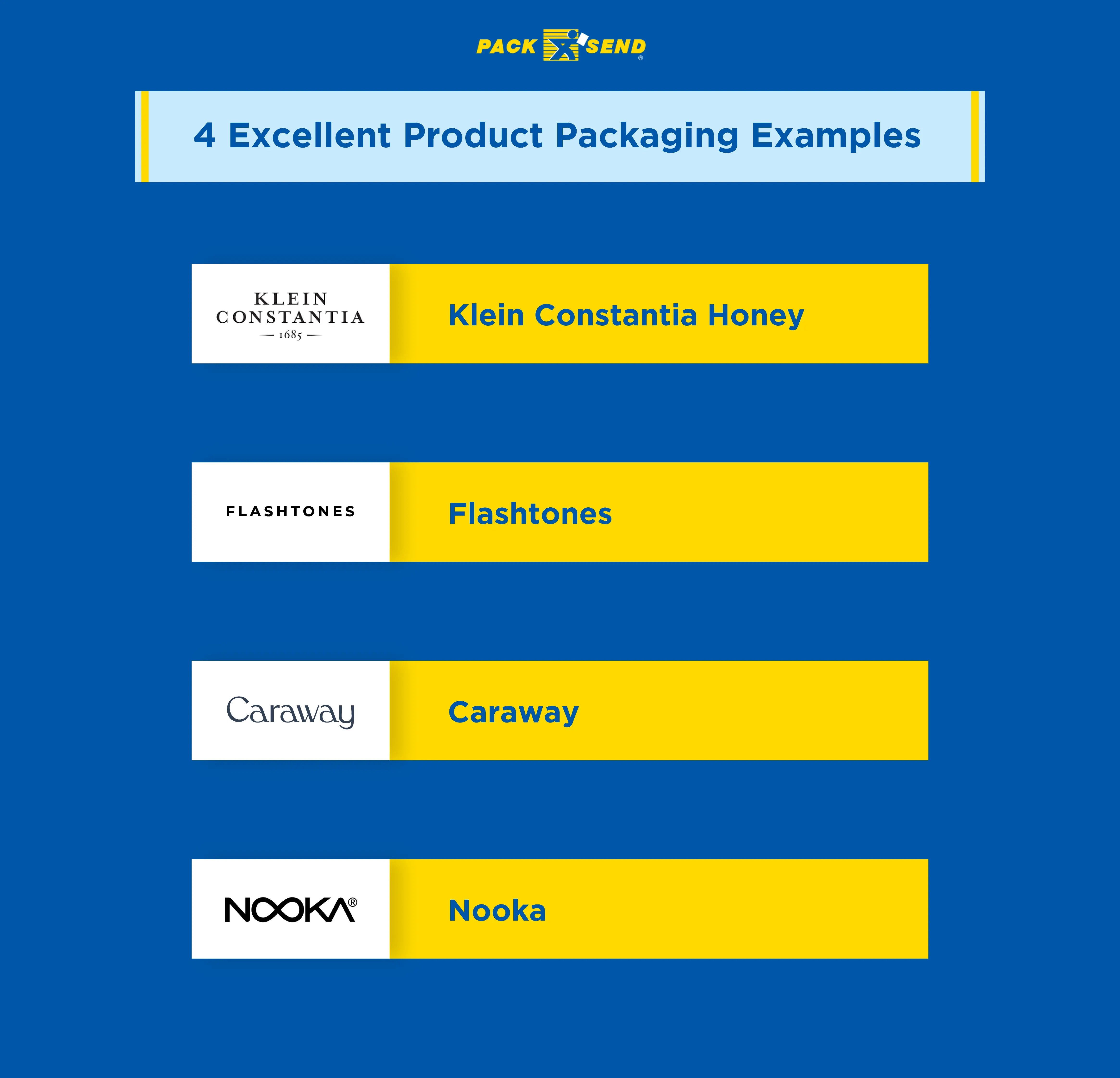
Below are a few product packaging examples that illustrate the best practices and creative packaging ideas.
Klein Constantia Honey
This honey package uses a minimalist design for secondary packaging featuring only the logo and graphic of a single honey bee entering the box. The inside however features more vibrant graphics with several honey bees surrounding the product.
The primary packaging is a glass jar with a simple label. But, the elegance of the packaging is enhanced by wrapping the jar with a piece of cloth and tying it with a golden thread.
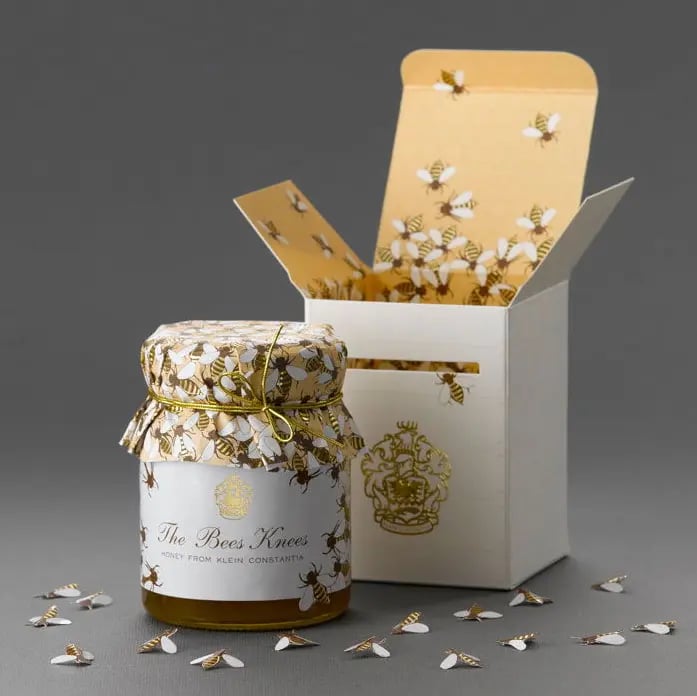
Flashtones
Flashtones uses cardboard boxes with a hole to showcase the product. It allows the customers to see the colour of the socks and also feel the quality of the material.
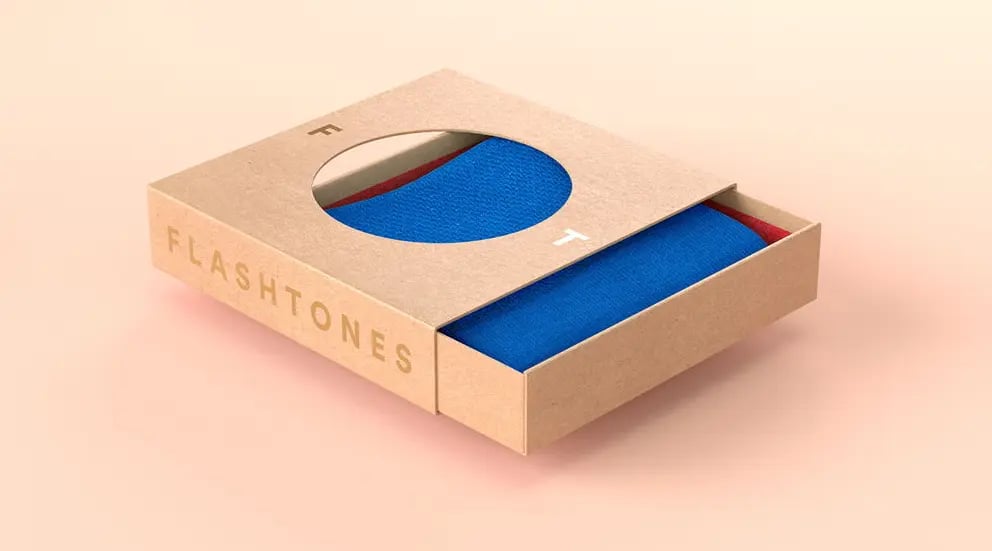
Caraway
Caraway creates non-toxic cookware products. So the packaging also reflects the brand philosophy of minimal toxicity. The company uses environmentally friendly product packaging material. Instead of using plastic or bubble wrap, the packaging protects the products with cardboard casing. This way Caraway communicates its brand values through product packaging.

Nooka
This brand creates quirky products. The packaging of Nooka reflects the playfulness of the brand. Nooka watches come in a glueless box that opens to reveal the brand’s message as well as user instructions. It also comes with an insect sitting atop the package to signify that they use environmentally friendly product packaging.
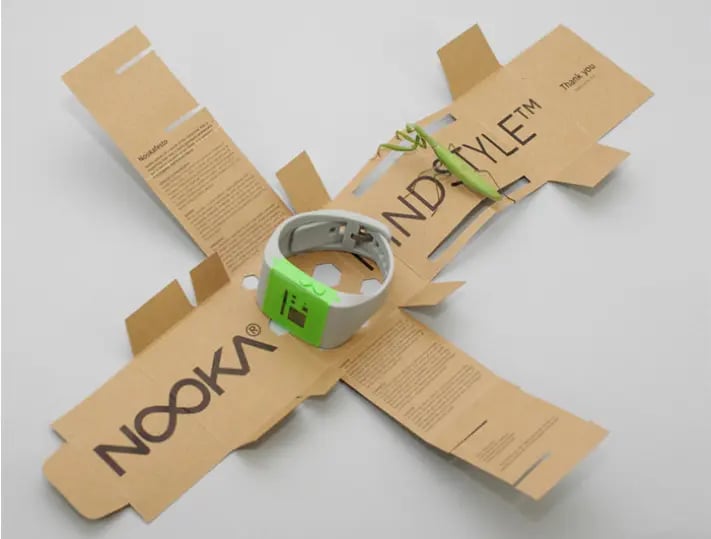
If you want more product packaging ideas, you can read this article. It discusses several product packaging solutions for different types of products.
Conclusion
When you are working out the product packaging process, remember the principles discussed in this article. You can also use these principles to measure the effectiveness of your product packaging ideas and designs.
The most important thing to remember about product packaging is that it should fulfil the desired purpose for both the buyer and the seller. For the buyer, it should convey information and create a positive customer experience. For the seller, the product packaging process should be cost-effective and yet fulfil all the required functions.
Frequently Asked Questions (FAQs)
How to get packaging for a product?
You can get packaging for a product from several different sources. You can develop a product packaging process in-house. But you will have to invest in procurement and manufacturing for this purpose. You can also outsource the entire process to product packaging companies. These companies develop packages as per your specifications. For transport packaging, you can either purchase boxes to pack the products yourself or outsource the process to a shipping and logistics company.
How to do packaging of a product?
The packaging of a product depends on several factors such as product size, frailty, budget, packaging purpose and so on. Based on these factors you need to decide the shape and size of the packaging as well as the material and protective layers. These factors also influence product packaging design and information architecture.
How does packaging affect the sales of a product?
Product packaging has a huge impact on the sales of a product. It influences the identification and attractiveness of the product. People also consider the environmental impact and product packaging recycling before buying a product.
How to design packaging for a product?
You can design packaging for a product by understanding the customers, product type, and product uses. Based on this information you can design the shape, size, type, and visuals of product packaging.
Image Sources: Shorr, Digitaljournal, Hubspot, Shorr, Pinterest, Behance, Carawayhome, Designbro
